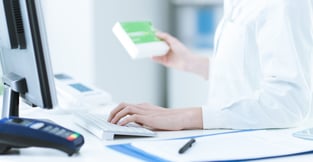 Among the many unique benefits that the proliferation of connected technology has brought us in the new Digital Age, perhaps the most distinct has been the increased awareness of the modern consumer. With the greatest wealth of information in history at our fingertips, and a more competitive global economy, individuals today can afford to be selective in choosing the businesses they will patronize.
Among the many unique benefits that the proliferation of connected technology has brought us in the new Digital Age, perhaps the most distinct has been the increased awareness of the modern consumer. With the greatest wealth of information in history at our fingertips, and a more competitive global economy, individuals today can afford to be selective in choosing the businesses they will patronize.
As a result of these shifting expectations and market conditions, many experts believe that we are now entering the Age of Customer Experience, in which the most successful businesses will be those that can differentiate themselves through more personalized, tailored and engaged service. In fact, 87 percent of consumers prefer to buy from brands that offer the most personalized customer experience.
In a recent PwC Health Research Institute report, four elements were defined for the next-generation patient, three of which directly correlate with the customer experience: the desire for personalized information and real-time feedback, active participation in care and treatment, and a focus on convenience and on-demand services.
Of course, the report also cited price as a major pain point for consumers, but it cannot be forgotten that most consumers are willing to spend more if they have a positive experience.
It's all about personalization
So how can pharmacies reconcile the need to personalize their patients’ experiences with the demand to control costs and manage workflows? We provide a unique solution for pharmacies with our automation and flavoring programs. We allow patients to choose how they would like their liquid medicine to taste, which in turn reduces stress and increases compliance in taking their prescriptions.
And by automating the process, we help enhance the workflow in the pharmacy while offering customers a unique, engaging and personalized experience that is literally tailored to suit their tastes.
In order for pharmacists to thrive in the competitive Age of Customer Experience, it will require unique solutions and a fair degree of creativity to take on new customers and retain your existing client base. If you’re looking for long-term sustainable growth in this rapidly shifting economy, how should you get started?
Get buy in
First and foremost is getting buy-in from everyone in the store to provide a great customer experience. Are customers being greeted genuinely? Does the staff feel empowered to do what’s right for the customer, without having to cut through red tape? Is the store clean and stocked? The answer to all of these questions, undoubtedly, is “no” if the pharmacy team isn’t engaged in the mission and vested in their success. The store team is retail pharmacy’s greatest asset.
Automate Routine Processes
Second is investing in technology that automates routine processes. Dispensing robots, pill counters, POS systems and the like make the rote task of the pharmacy transaction faster and easier. This gives pharmacists and technicians time to focus on customer interaction which is a critical component to retail pharmacy experience. Automation also reduces wait-times, a big factor in determining whether a customer has a positive or negative experience.
Invest in Technology
A third strategy for improving the retail pharmacy customer experience is to invest in digital technology. Mobile apps, text messaging, and personalized offers based on loyalty purchases are all ways to make the pharmacy shopping experience relevant and efficient. According to the Pew Research Center, 95% of Americans now have a mobile device, with 77% owning a smart phone. The ability to reach customers at any time, wherever they are is unprecedented and exciting.
Pharmacies that spend time, money, and effort on improving their customer experience, specifically by training and engaging their employees, investing in automation, and taking advantage of digital technology, will thrive in today’s competitive retail landscape. There’s still time to differentiate based on a better experience. Hurry though. The window is closing fast.



